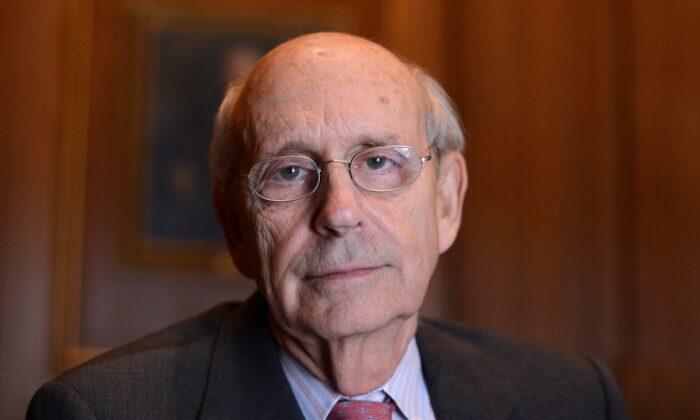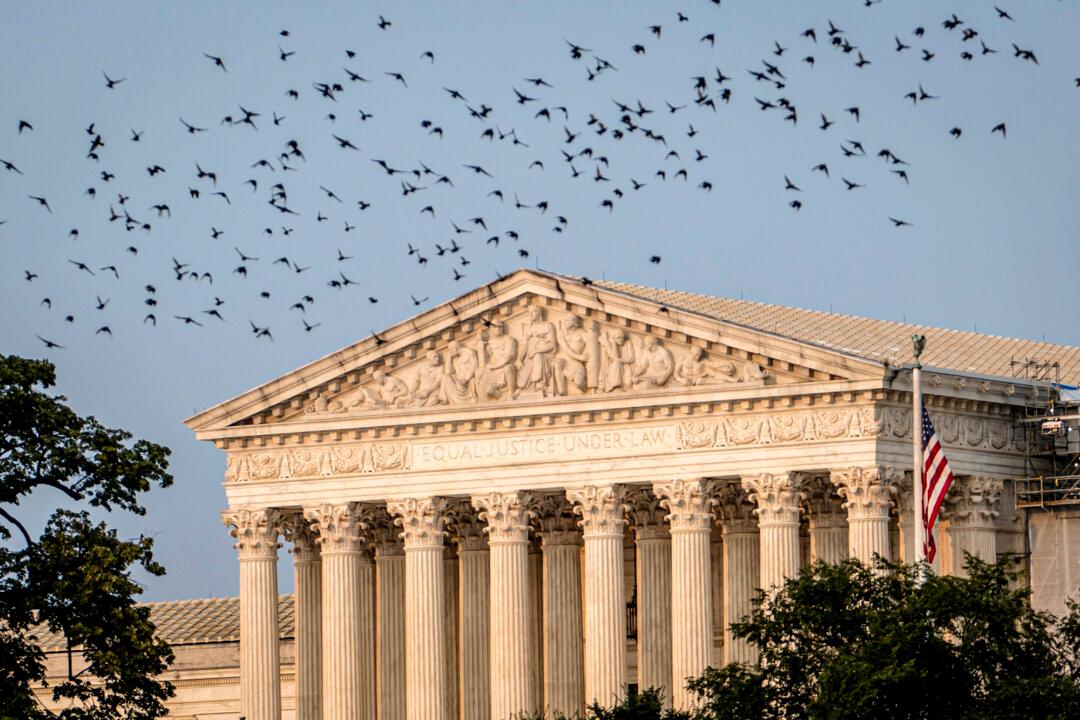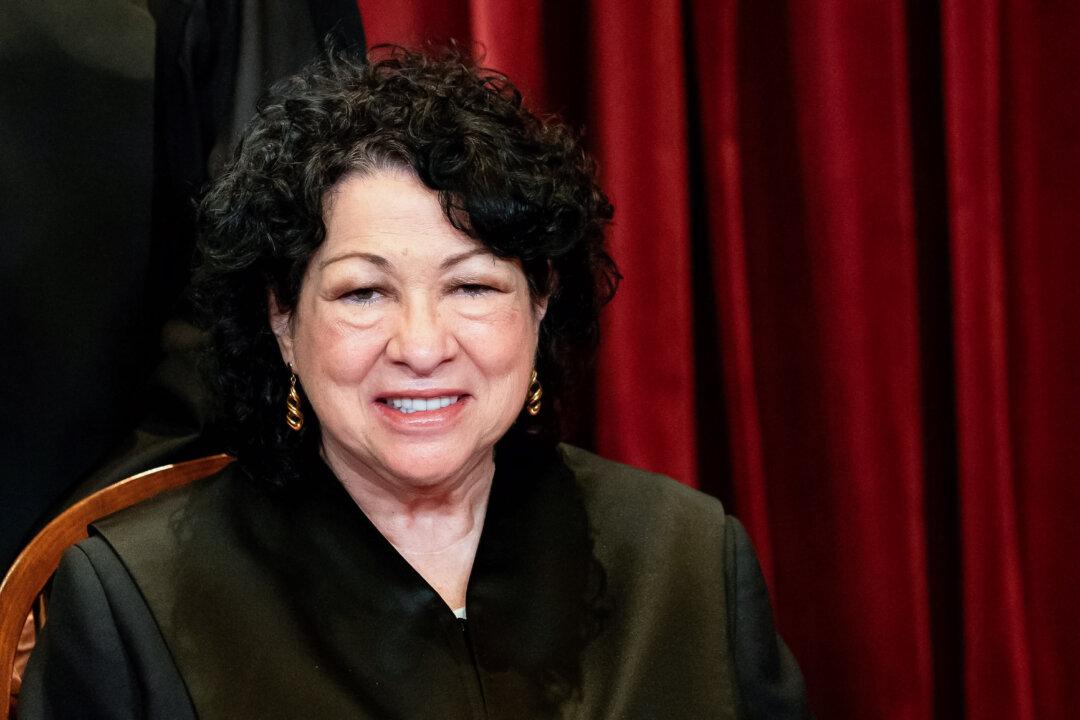Former Supreme Court Justice Stephen Breyer, who retired almost two years ago, criticized the increasingly conservative lean of the court that accelerated in the Trump years.
Commentators say the Supreme Court has moved to the right since President Bill Clinton appointed Justice Breyer to the court in 1994. President Donald Trump’s appointment of three conservative justices—Neil Gorsuch, Brett Kavanaugh, and Amy Coney Barrett—helped to set the stage for the court to overturn Roe v. Wade and affirmative action in college admissions and recognize a constitutional right to keep and bear arms in public for self-defense.
Justice Breyer, 85, disapproves of this rightward drift and has expressed his distaste for originalism and textualism, both of which are popular with conservatives.
Originalism holds that the U.S. Constitution should be interpreted according to what the words in the text meant at the time they were written. Textualism, which was championed by the late conservative Justice Antonin Scalia, holds legal text should be interpreted based on its plain meaning, as opposed to other considerations such as what lawmakers intended when they drafted and approved a statute.
Liberal justices like Justice Breyer tend to support more flexible approaches to the interpretation of legal texts.
If the court continues to interpret laws in ways favored by conservatives, “We will have a Constitution that no one wants,” Justice Breyer told Politico.
The former justice said he and Justice Scalia used to argue about legal interpretation in front of students.
“I would say, ‘Nino, the world has changed. George Washington didn’t know about the internet.’ And Nino would say, ‘I knew that. Good point.’ And then he would say that this method—what I think of as traditional, I think involves purposes, consequences, values and sometimes much more—he’d say, ‘It’s too complicated. Maybe you’re the only one who can do it.’
“And I would say to him: ‘Yes, but we if we adopt your method, your method of interpreting the Constitution, or the statutes, we will have a Constitution that no one wants.’ Because the world does change, not necessarily so much in terms of values, but certainly in terms of the facts to which those values are applied. And that I think is the real argument—taking very seriously what they want, and saying—through example, not through a theory that a law professor has made up, but through example—showing that this textualism or this originalism just won’t work.”
Justice Breyer said the court was wrong to overturn Roe v. Wade in Dobbs v. Jackson Women’s Health Organization in 2022. The Dobbs ruling, which came days before he retired from the court, found abortion was not a constitutional right and returned the regulation of abortion to the states.
In Dobbs, five conservative justices voted to reverse Roe. Chief Justice John Roberts, also considered a conservative, voted to uphold a restrictive Mississippi abortion law in the case but wrote that he would have stopped short of overturning Roe. Three liberal justices, including Justice Breyer, issued a strongly worded joint dissent.
One of the reasons why Roe should have been left in place is “stare decisis,” he said, a legal term meaning following legal precedent.
“And stare decisis means that you are very reluctant as a judge to overturn a case that has been decided in the past. Not ‘never,’ but very rarely. That keeps stability in the law.”
Originalists run into problems when deciding if a precedent should be reversed, he said.
“Now tell me, what cases are you going to overrule? Are you going to overrule all cases that do not use your originalist method? If so, you will overrule virtually every case in the Supreme Court, because very few use that method.”
Textualism and originalism don’t offer guidance on overturning precedents, he said.
“Who’s going to decide—that judge who wants to overrule it? And how will he decide? Textualism won’t tell him. Originalism won’t tell him. He will have to think to himself, ‘Is this egregiously wrong?’
“Now, what have I just done? I’ve created room for the judge to substitute his own views of what is egregiously wrong—or what is really wrong or what is wrong and what is right—for the law. Exactly the thing that he adopted textualism [to avoid]—because he thought the pragmatists, the traditionalists do that. Well, if they can do that, so can he, because textualism allows exactly the same thing.”
The Supreme Court needs popular support and originalists and textualists won’t be able to maintain that support over time, Justice Breyer said.
“What I worry is this: Over time, if I’m right, and I think I am, about how originalism and how textualism will work … they will move the interpretation of statutes away from the direction of trying to help people. They will move the law away from the direction of trying to produce a society where 340 ... million people of every race, every religion, every point of view, can live together more peacefully and productively.”
With Second Amendment rights, for example, “we will not be allowed to look at what I think is a rather salient fact: There are 400 million guns in the United States. Should you not be able to take [into] account that we are number one in guns in the world?
“That will move us away from the Constitution’s basic values. And if we are moved away to that degree, people will instinctively have less reason to follow cases they don’t like, which is called the rule of law.”
On March 24 he told NBC’s “Meet the Press” that he supports term limits for Supreme Court justices.
After a pressure campaign from left-leaning groups urged him to leave office to give President Joe Biden an opportunity to replace him with a younger liberal justice, Justice Breyer stepped down at the end of June 2022. President Biden replaced him with another liberal, Justice Ketanji Brown Jackson, who is now 53.
Justice Breyer said it wouldn’t be “harmful” to impose limits on the service of Supreme Court justices. Justices could still serve “long terms,” he said.
“Why long? Because I don’t think you want someone who’s appointed to the Supreme Court to be thinking about his next job,” he said.







